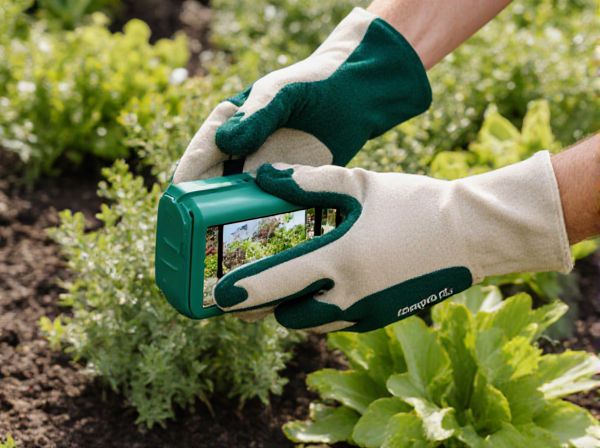
Portable gardens vs Fixed gardens Illustration
Portable gardens offer flexibility and ease of relocation, making them ideal for small spaces and urban environments. Fixed gardens provide stability and deeper soil beds, which support larger plants and longer growth cycles. Choosing between portable and fixed gardens depends on factors like space availability, plant types, and personal mobility needs.
Table of Comparison
| Feature | Portable Gardens | Fixed Gardens |
|---|---|---|
| Mobility | Easy to move, ideal for limited spaces | Permanent location, suited for large areas |
| Installation | Simple setup with containers or raised beds | Requires ground preparation and construction |
| Space Utilization | Optimizes small or rented spaces | Maximizes outdoor landscape potential |
| Maintenance | Flexible and easy to adjust | More time and labor-intensive |
| Cost | Lower initial investment | Higher upfront cost with long-term benefits |
| Plant Variety | Limited by container size | Supports wider plant selections |
| Drainage & Soil Quality | Controlled environment, customized soil mix | Dependent on soil health and drainage conditions |
| Longevity | Seasonal or movable; may require replacements | Durable, designed for long-term growth |
Introduction to Portable and Fixed Gardens
Portable gardens offer flexibility and mobility by utilizing containers that can be easily relocated to optimize sunlight exposure and space usage, ideal for urban environments and seasonal changes. Fixed gardens, established directly in the ground, provide stability for permanent plantings and larger crops, supporting deeper root systems and sustained growth. Both garden types cater to different needs, with portable gardens excelling in versatility and fixed gardens in long-term cultivation.
Key Differences Between Portable and Fixed Gardens
Portable gardens offer flexibility and mobility, allowing plants to be moved indoors or outdoors based on seasonal changes and sunlight needs, whereas fixed gardens are permanently planted in a specific area, providing stability and deeper root growth. Portable gardens typically use containers, which limit root space and require more frequent watering, while fixed gardens have access to natural soil nutrients and better water retention. Maintenance differences include ease of relocation and adaptability for portable gardens compared to the structural commitments and soil management involved in fixed gardens.
Advantages of Portable Container Gardens
Portable container gardens offer flexible placement options, allowing homeowners to optimize sunlight exposure and easily relocate plants to protect them from harsh weather. These gardens require less space and can be set up in urban environments such as balconies or rooftops, making gardening accessible to people without traditional yard space. The mobility also facilitates seasonal gardening, pest management, and soil quality control, enhancing overall plant health and yield.
Benefits of Fixed Garden Containers
Fixed garden containers offer enhanced stability and durability, making them ideal for long-term planting projects. Their robust structure supports larger plants and heavier soil, reducing the risk of tipping or damage from wind. Fixed containers also provide better insulation, helping maintain consistent soil moisture and temperature essential for healthy plant growth.
Space Efficiency: Which Garden Type Wins?
Portable gardens maximize space efficiency by allowing gardeners to utilize vertical and small areas such as balconies, patios, and rooftops, making them ideal for urban environments with limited ground space. Fixed gardens require dedicated plots of land, which may limit flexibility but can support larger planting areas and deeper root systems. For those prioritizing adaptability and optimal use of compact spaces, portable gardens offer a superior solution in space efficiency.
Mobility and Flexibility in Container Gardening
Portable gardens offer unmatched mobility, allowing gardeners to easily relocate containers for optimal sunlight exposure or seasonal changes. Fixed gardens, while stable and permanent, lack this flexibility, limiting adaptability to changing environmental conditions. Container gardening enhances flexibility by enabling both approaches, with portable containers providing dynamic placement and fixed containers offering consistent growth zones.
Cost Comparison: Portable vs Fixed Gardens
Portable gardens generally incur lower initial setup costs due to minimal soil preparation and flexibility in location, whereas fixed gardens often require substantial investment in landscaping, soil amendment, and permanent structures. Maintenance expenses for portable gardens tend to be more variable but can increase over time with the need for frequent watering and container replacement. Fixed gardens, despite higher upfront costs, may benefit from long-term savings through established irrigation systems and soil health improvements that enhance productivity.
Plant Selection for Portable and Fixed Gardens
Portable gardens require selecting compact, lightweight plants such as herbs, succulents, and small vegetables that thrive in confined spaces and can tolerate movement. Fixed gardens allow for a broader range of plant choices including deep-rooted perennials, large shrubs, and climbing plants due to stable soil conditions and permanent placement. Optimal plant selection depends on factors like root depth, growth habit, and resilience to environmental changes specific to portable or fixed garden settings.
Maintenance and Care Challenges
Portable gardens require regular watering and frequent repositioning to ensure optimal sunlight exposure, which can increase maintenance efforts compared to fixed gardens. Fixed gardens benefit from established root systems and stable soil conditions, reducing the need for constant soil monitoring and adjustments. Both garden types face challenges such as pest control and seasonal care, but portable gardens often demand more attentive management due to their limited soil volume and mobility.
Choosing the Right Garden Type for Your Needs
Portable gardens offer flexibility and mobility, making them ideal for urban dwellers or renters with limited space. Fixed gardens provide a more permanent solution with better soil quality and long-term growth potential, suited for homeowners with dedicated outdoor space. Assess factors like space availability, plant types, and maintenance commitment to select the most appropriate garden type for your lifestyle and environment.
Portable gardens vs Fixed gardens Infographic

 gardendif.com
gardendif.com